
"In the Midnight Hour" is a song originally performed by Wilson Pickett in 1965 and released on his 1965 album of the same name, also appearing on the 1966 album The Exciting Wilson Pickett. The song was composed by Pickett and Steve Cropper at the historic Lorraine Motel in Memphis, later the site of the assassination of Martin Luther King Jr. Pickett's first hit on Atlantic Records, it reached number one on the R&B charts and peaked at number 21 on the pop charts.

"Secret Love" is a song composed by Sammy Fain (music) and Paul Francis Webster (lyrics) for Calamity Jane, a 1953 musical film in which it was introduced by Doris Day in the title role. Ranked as a number 1 hit for Day on both the Billboard and Cash Box, the song also afforded Day a number 1 hit in the UK. "Secret Love" has subsequently been recorded by a wide range of artists, becoming a C&W hit firstly for Slim Whitman and later for Freddy Fender, with the song also becoming an R&B hit for Billy Stewart, whose version also reached the top 40 as did Freddy Fender's. In the UK, "Secret Love" would become the career record of Kathy Kirby via her 1963 remake of the song. The melody bears a slight resemblance to the opening theme of Schubert's A-major piano sonata, D.664.
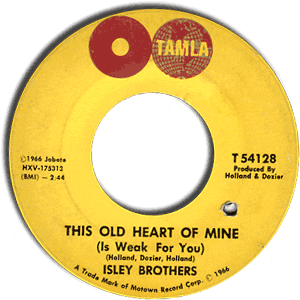
"This Old Heart of Mine (Is Weak for You)" is a Holland–Dozier–Holland song that was a hit for American musical group the Isley Brothers in January 1966 during their brief tenure on Motown's Tamla label. Featuring Ronald Isley on lead vocal, "This Old Heart of Mine" peaked at number twelve on the Billboard Hot 100, and at number six on the Billboard R&B Singles chart.
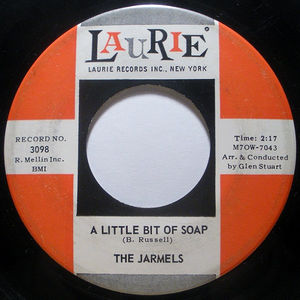
"A Little Bit of Soap", written by Bert Berns, was a song, first sung in a bluesy soul style by the Jarmels, who reached number 12 with it in September 1961 and number 7 on the R&B charts. The song has been covered by many other artists.
Joyce Elizabeth Sims-Sandiford was an American singer and songwriter, whose biggest hit single, "Come into My Life", reached the top 10 in both the US Billboard R&B Chart and the UK Singles Chart in 1987/8.

The Happenings are a pop music group that originated in the 1960s. Members of the original group, created in the spring of 1961 and initially called "The Four Graduates" because all had just graduated from high school in Paterson, New Jersey, were Bob Miranda, David Libert, Tom Giuliano, and Ralph DiVito. In 1968 DiVito was replaced by Bernie LaPorta and Lenny Conforti also joined to play drums in the touring band. Both LaPorta and Conforti took a hiatus from the northern New Jersey band, the Emerald Experience, to play and tour with the Happenings. That lineup performed mostly at colleges and universities until 1970, when Libert left the band to manage other groups, including George Clinton and Parliament-Funkadelic, Living Colour, Brian Auger, Vanilla Fudge, the Runaways, Mother's Finest, Alice Cooper and Evelyn "Champagne" King.

"Since I Don't Have You" is a song written and composed by Jackie Taylor, James Beaumont, Janet Vogel, Joseph Rock, Joe Verscharen, Lennie Martin, and Wally Lester. It was first a 1958 hit single for the doo-wop group the Skyliners on the Billboard Hot 100. Country music singer Ronnie Milsap had a hit with the song in 1991. American hard rock band Guns N' Roses also had some success in 1994 with their version of the song which reached the top 10 on the UK Singles Chart.
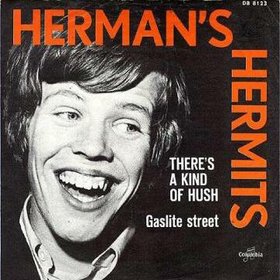
"There's a Kind of Hush" is a popular song written by Les Reed and Geoff Stephens. Originally recorded by Stephens' group the New Vaudeville Band in 1967 as a neo-British music hall number, this version of the track became a hit in Australia and South Africa. However, in the rest of the world, a near-simultaneous cover was a big hit for Herman's Hermits. The song was a charted hit again in 1976 for The Carpenters.

"Heat Wave" is a 1963 song written by the Holland–Dozier–Holland songwriting team. It was first made popular by the Motown vocal group Martha and the Vandellas, who issued it as a single on July 10, 1963, on the Motown subsidiary Gordy label. The single reached number one on the Billboard Hot R&B chart—where it stayed for four weeks—and peaking at number 4 on the Billboard Hot 100.

"Everybody's Somebody's Fool" is a song written by Jack Keller and Howard Greenfield that was a No. 1 hit for Connie Francis in 1960. A polka-style version in German, "Die Liebe ist ein seltsames Spiel", was the first German single recorded and released by Connie Francis, and it reached No. 1 on the single chart in 1960 in West Germany.
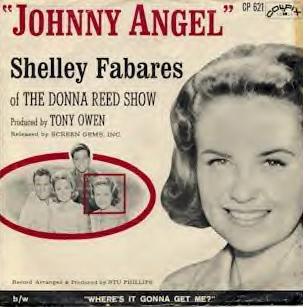
"Johnny Angel" is a song written and composed by Lyn Duddy and Lee Pockriss. It was originally recorded by both Laurie Loman and Georgia Lee, but those two versions were not successful. It first became a popular hit single when it was recorded by Shelley Fabares in the fall of 1961; she took it to number 1 on the Billboard Hot 100 Chart when the song was released in 1962. In the same year, British singer Patti Lynn had a moderate hit on the UK Singles Chart with her cover of the song. The American pop music duo The Carpenters recorded "Johnny Angel" in 1973 as part of a medley of oldies on side two of their album Now & Then.
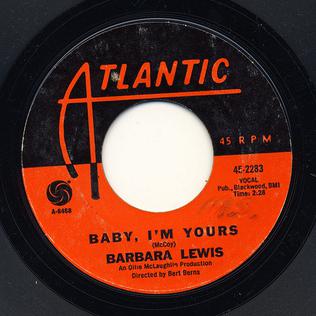
"Baby I'm Yours" is a song written by Van McCoy which was a hit in 1965 for Barbara Lewis, the original recording artist. The song was featured in the 1995 film The Bridges of Madison County and was included on the soundtrack album. It was also featured in the TV movies The Midnight Hour (1985) and An American Crime (2007), as well as being briefly featured in Baby Driver.
"Chanson D'Amour" is a popular song written by Wayne Shanklin. A 1977 recording by the Manhattan Transfer was an international hit, reaching number one on the UK Singles Chart.
"The Things We Did Last Summer" is a popular song about nostalgia from 1946. The words were written by Sammy Cahn, with the composition by Jule Styne. The most well known version is the 1946 Top ten hit by Jo Stafford. Versions by Frank Sinatra and by Vaughn Monroe also charted that year. Shelley Fabares had a hit cover in 1962 on the pop chart. Several recordings have been made, including versions by Frank Sinatra, Vaughn Monroe, and Dean Martin who recorded different versions for his 1959 and 1966 Christmas LPs.

"Beechwood 4-5789" is a song written by Marvin Gaye, William "Mickey" Stevenson and George Gordy. It was a 1962 hit single for the Motown girl group The Marvelettes on Motown's Tamla subsidiary record label. The song became a hit again when it was covered by the pop duo The Carpenters in 1982.
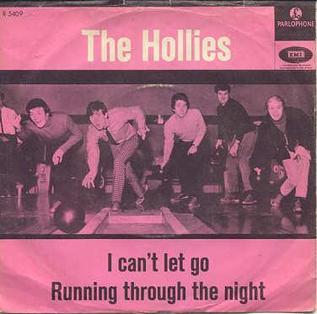
"I Can't Let Go" is a song co-written by Al Gorgoni and Chip Taylor, who also wrote "Wild Thing". "I Can't Let Go" was originally recorded by blue-eyed soul singer Evie Sands' on George Goldner's Blue Cat label, which was popular in New York City in 1965. The song became popular in 1966 for the group the Hollies, who charted at number two in the UK Singles Chart with their version. Linda Ronstadt covered the song in 1980 and had a number 31 hit on the US Billboard Hot 100 chart.
"It's Growing" is a 1965 hit single by The Temptations for the Gordy (Motown) label. Written by Miracles members Smokey Robinson and Pete Moore and produced by Robinson, the song was a top 20 pop single on the Billboard Hot 100 in the United States, on which it peaked at number 18. On Billboard's R&B singles chart, "It's Growing" peaked at number 3.

"Husbands and Wives" is a song written and first recorded by American country music singer Roger Miller. Miller's original, from his album Words and Music, was released in February 1966 and was a crossover hit for him, reaching Top Ten on the U.S. country and Adult Contemporary charts, as well as Top 40 on the pop charts. Since the release of Miller's original, the song has been covered by several other artists, including The Everly Brothers, Ringo Starr, Neil Diamond, a duet between David Frizzell and Shelly West, Jules Shear, and Brooks & Dunn, whose version was a number-one country hit in 1998.

"I'm Gonna Be Warm This Winter" is a 1962 single by Connie Francis, released in that December to peak at #18 on both the Billboard Hot 100 and the Cash Box Top 100. The song reached #22 UK in December 2008 via a remake by Gabriella Cilmi titled "Warm This Winter".

"Lipstick on Your Collar" is a song written by Brill Building staff writers Edna Lewis (lyrics) and George Goehring (music) which was a 1959 hit single for Connie Francis.

















